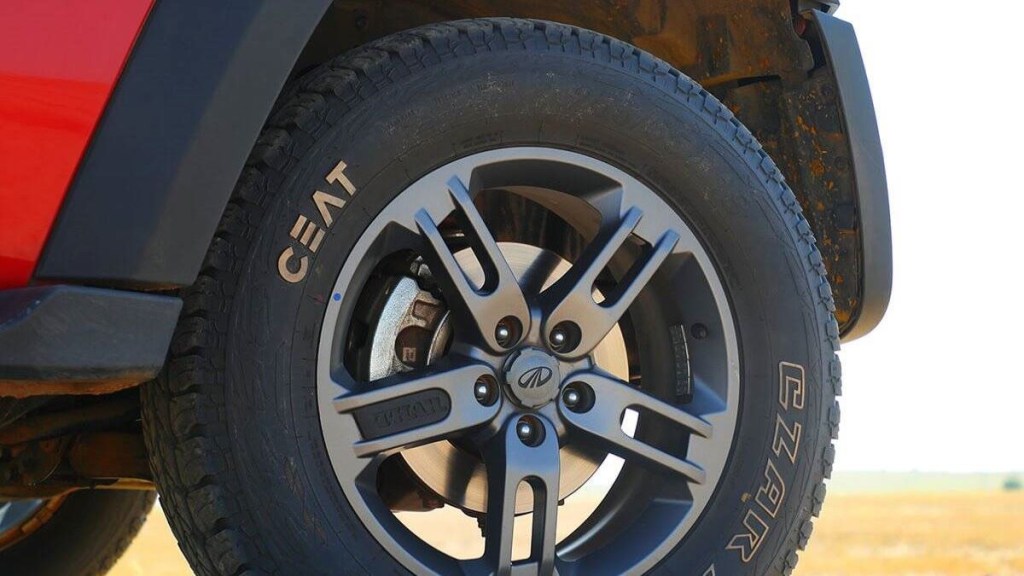Earlier this week, talking about Delhi pollution levels, Prof Sachchida Nand Tripathi of IIT Kanpur (who is also Steering Committee member, National Clean Air Programme) told the Indian Express that vehicular pollution has two components: exhaust from the tailpipe, and from tyre and brake wear & tear.
To understand the latter, we talked to Prof Sharad Gokhale, professor of Environmental Engineering and head of Civil Engineering Department at IIT Guwahati, who explained what kind of pollution vehicle tyres can cause.
Is tyre wear & tear pollution as bad as tailpipe emissions?
It’s actually worse, but nobody has been able to quantify the kind of emissions that go into the atmosphere from tyre wear & tear.
How do tyres pollute the air?
There are two kinds of pollution: direct and indirect.
Direct: Moving tyres, especially during acceleration and braking, release very fine rubber compound particles in the air. These contain heavy metals (lead, copper, cadmium, nickel) and some carcinogens. These particles are less than 2.5 microns in diameter, also known as fine particles or PM2.5. These can settle deep inside the lungs and pose a big risk to health.
Indirect: When you drive a vehicle with incorrect tyre pressure (usually underinflated tyres), it increases the friction of the tyre surface with the road, and the vehicle needs more power to run at the same speed. That leads to higher fuel consumption, and thus higher tailpipe emissions.
This tyre wear & tear pollution is confined to traffic corridors – mostly released on the highways and usually settles down in that area. This, however, badly impacts the health of people living and working on the highways.
But isn’t a tyre made of rubber, a natural compound?
Tyres are made of synthetic rubbers, fillers, softeners, chemical compounds such as 6PPD (added to tyres to stop them breaking down), and so much more. It’s a complex cocktail.
In what other way do tyres pollute?
In India, in particular, we have seen that people burn tyres on the roadside during winters, and that possibly in the most horrible cause of pollution from the tyres.
What are other non-tailpipe emission sources?
Wear & tear of brake pads, oil leakages, paint deterioration (and subsequent release into the atmosphere), and plastic fumes (when a car is parked in the sun for a long time) are other non-tailpipe emission sources, but tyres are by far the biggest source.
Why tyre wear & tear hasn’t been quantified till now?
One reason is that it’s a very complicated process. Another reason is that as compared to tailpipe emissions, tyre wear & tear is less in terms of quantity (kg per distance travelled). But modern BS6 vehicles are supremely clean (as far as tailpipe emissions go), so in terms of quality tyre pollution seems to be very bad. UK-based independent emissions testing company, Emissions Analytics, had found that almost 2,000 times more particle pollution is produced by tyre wear & tear than is pumped out of exhausts of modern cars.
Quantification efforts have been there globally. A recent Imperial College London report (Tyre wear particles are toxic for us and the environment) found that 6 million tonnes of tyre wear particles are released globally each year. “In London alone, 2.6 million vehicles emit about 9,000 tonnes of particles annually,” the report said.
Do tyres cause only air pollution?
No, it goes worse. The tyre particulate matter that settles on the road is washed away by rainfall into agricultural fields and groundwater. That comes back into our food chain and eventually our bodies.
This particulate matter also runs-off into storm drains, emptying into rivers and eventually the sea. It kills marine life and enters human body when they eat fish and seafood etc.
Are companies working on more ecofriendly tyres?
They are. For example, one major tyre company has created synthetic rubber using plant-derived materials rather than petroleum products. Other companies are also experimenting with producing synthetic rubber made from biomass (plant-derived material or agricultural waste). Synthetic rubber is a substitute for natural rubber, and that can reduce the environmental impact and logistical expenses of importing natural rubber from subtropical countries to developing and developed markets.
How many tyres are there in India?
According to the Automotive Tyre Manufacturers’ Association (ATMA), in FY21 as many as 169 million tyres were produced in India. This number would have gone far higher now with more vehicles getting sold.

